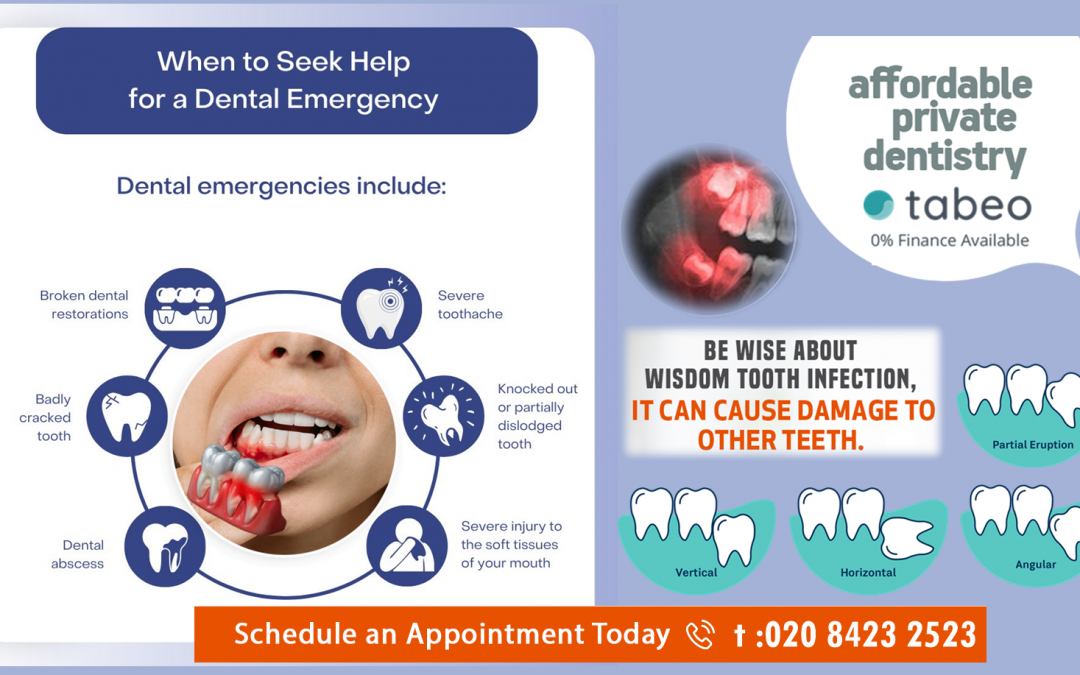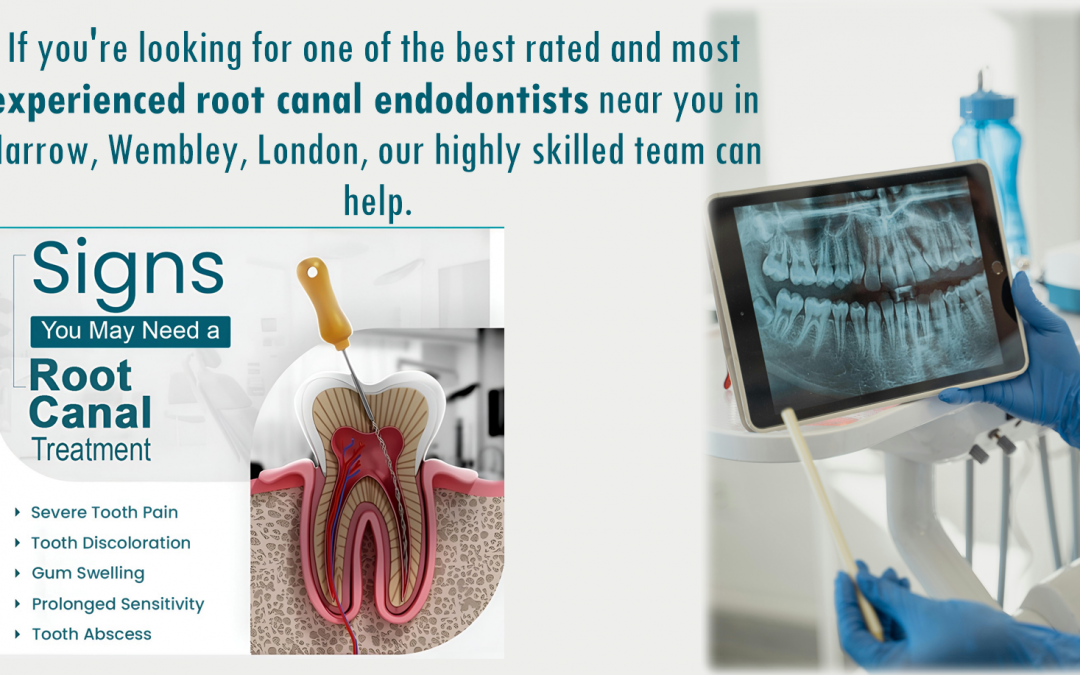Problems with erupting wisdom teeth – Emergency Dental Clinic – Wembley, Harrow
Wisdom teeth can cause complications like impaction, where teeth don’t fully emerge, leading to pain, swelling, and infection (pericoronitis). Other issues include tooth decay from poor cleaning access, gum disease affecting surrounding teeth, crowding and misalignment of other teeth, and the formation of cysts or tumours. Post-extraction risks include infection, excessive bleeding, and temporary or permanent nerve injury.
Common complications from wisdom teeth:
- Impaction: The tooth is trapped under the gum or bone, or emerges at an angle, unable to fully break through the gum line.
- Pericoronitis: Inflammation and infection of the gum tissue around a partially erupted wisdom tooth.
Tooth Decay: Difficult-to-clean wisdom teeth are prone to plaque and bacteria buildup, leading to decay in the wisdom tooth itself or the tooth in front of it. - Gum Disease: Plaque irritates the gums, leading to redness, swelling, and pain.
- Crowding and Misalignment: Impacted wisdom teeth can push against neighboring teeth, causing them to misalign or be damaged.
- Cysts and Tumours: Rarely, a fluid-filled sac can form around an impacted tooth, and in even rarer cases, it can become a tumor, damaging surrounding bone.
- Abscesses: A collection of pus can form due to bacterial infection in the tooth or surrounding tissue.
Risks associated with wisdom tooth removal:
- Infection: A risk after any oral surgery.
- Bleeding: Some bleeding is normal, but excessive bleeding may require medical attention.
- Nerve Injury: Nerves can be damaged during surgery, potentially causing temporary or, rarely, permanent numbness or paralysis of the lip, tongue, or cheek.
- Alveolar Osteitis (Dry Socket): A common complication where the blood clot that protects the healing socket is lost, exposing the bone.
- Pain and Swelling: Swelling and soreness in the jaw are normal after surgery but can be significant.




